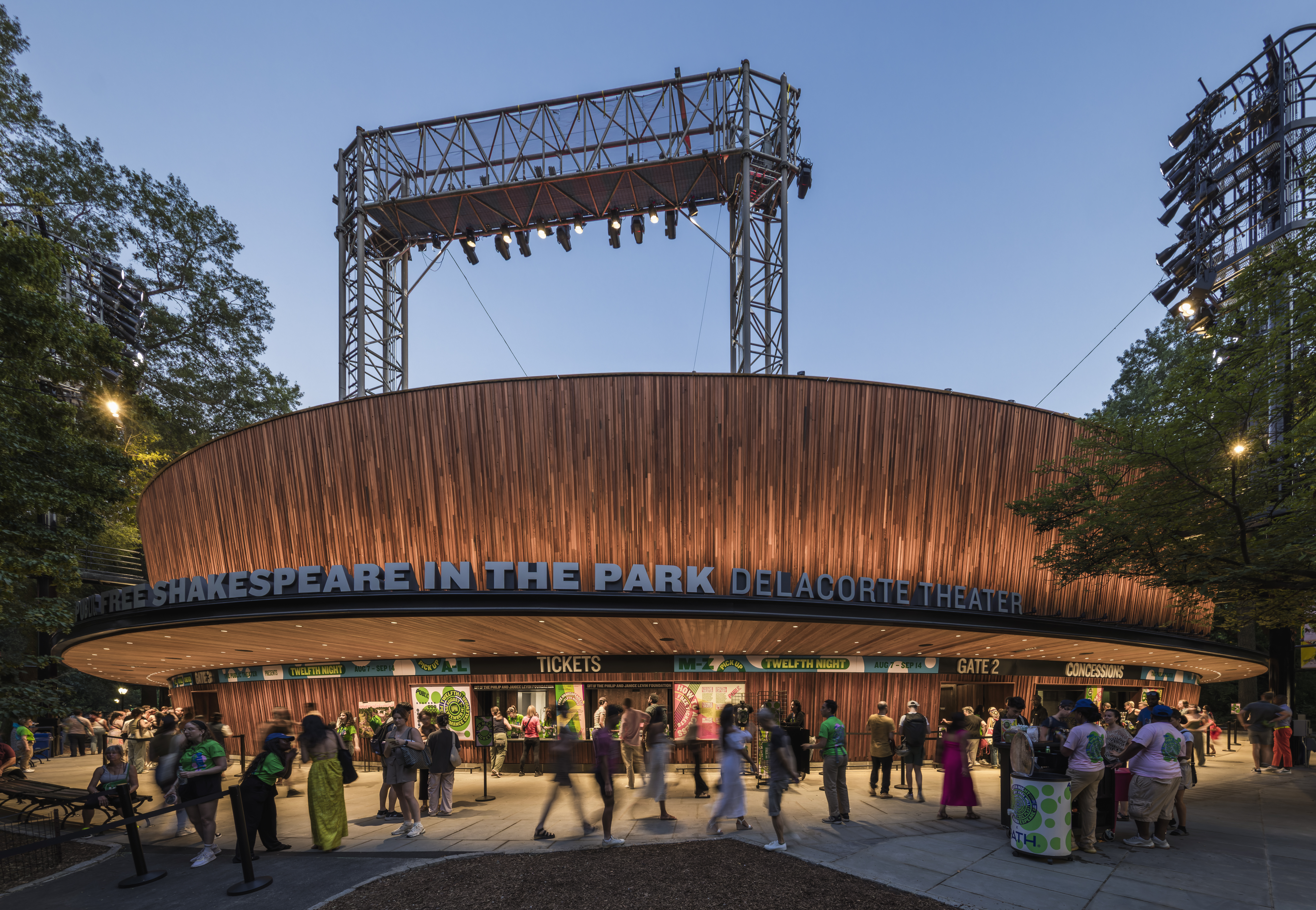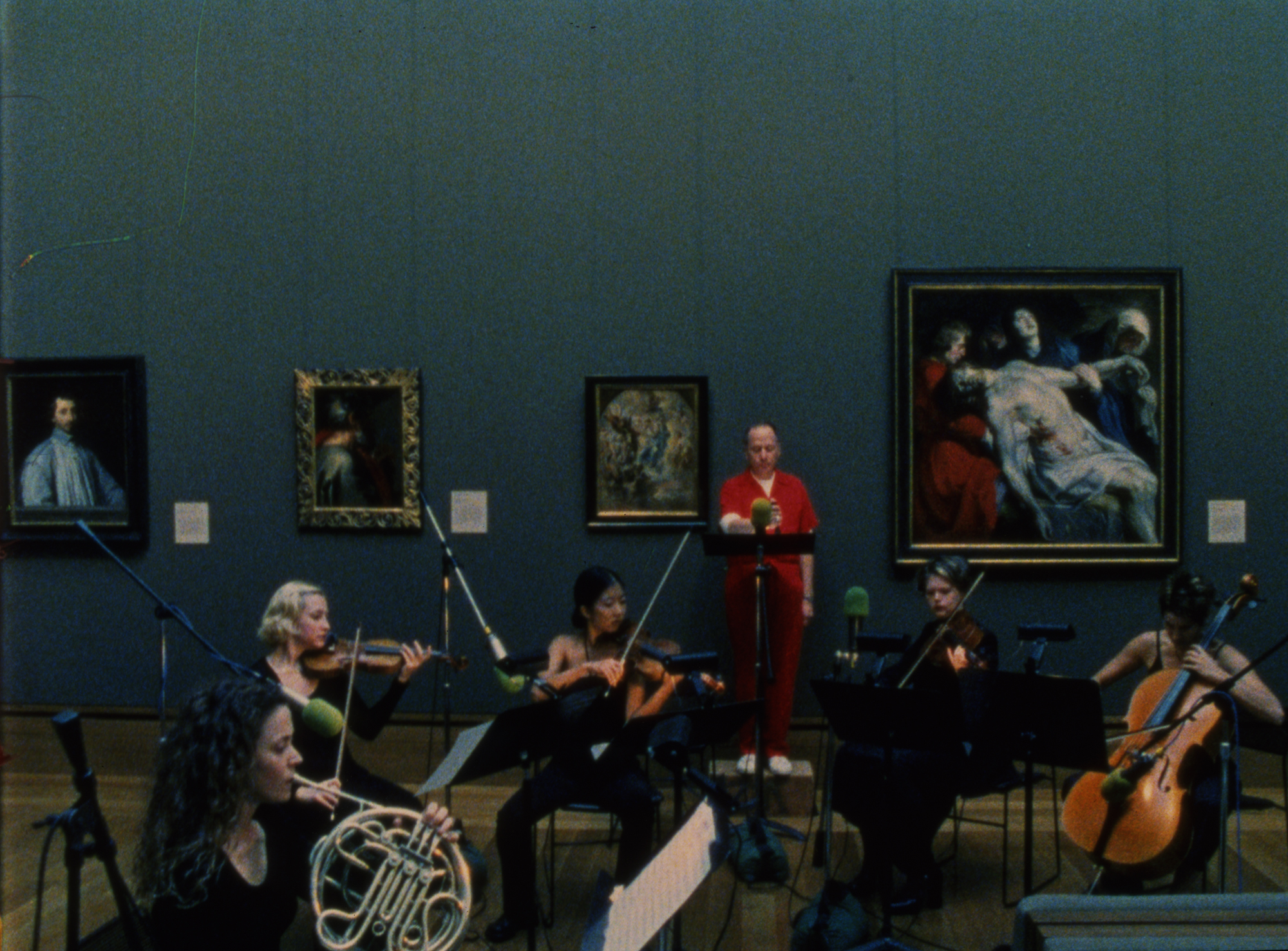Lucy McRae on gene editing, human intimacy, and tangible science fiction
We explore the universe of sci-fi artist and ‘body architect’ Lucy McRae, whose science fiction works fuse human intimacy, biological perfection and speculative, yet eerily familiar futures

Charles White - Photography
‘I have always been driven by the provocation: How would advanced technologies change our bodies, change our minds?’ British-born Australian artist Lucy McRae explains over a video call from her studio in Los Angeles. The multidisciplinary artist and ‘body architect’ has just opened her first exhibition in the city – and in America – at Honor Fraser gallery. ‘Future Sensitive’ will debut two short films, Futurekin and Delicate Spells of Mind, alongside costumes adapted from objects sourced from McRae’s home and transformed into assemblages; a third film, Institute of Isolation, which was released in 2016, ‘contemplates whether isolation may be a gateway to training human resilience’; while a series of sculptures, garments and photography are also featured.
The exhibition ‘gestures towards a future where advanced genetic engineering will enable humans to be grown in laboratories outside of the womb,’ says McRae. It’s a complex proposition, at once uncanny and realistic, which the artist processes and communicates through world-building, both in her films and in the design of the exhibition. ‘I am always trying to build worlds physically or thematically. Instead of it being a process of “write a script, find the protagonist and build the world”, I start with an object, or a costume, or a machine, which becomes the protagonist, and build the world around it,’ says McRae. ‘I build these “what if?” scenarios and play them out, trying to understand: Do we want this? If reproducing human biology in a laboratory is possible, should we?’

Installation view of 'Future Sensitive' by Lucy McRae at Honor Fraser Gallery.
Genetic engineering and CRISPR technology, which can be used to edit genes, have played an important role in McRae’s research for years; her practice is focused on themes of human intimacy, reproductive technology, wellness culture and human biology, as well as ‘dabbling in artificial intelligence and edible technology’. Honor Fraser had seen McRae’s work on CRISPR while working on a project with her at SCI-Arc (Southern California Institute of Architecture), where McRae was formulating ‘an artistic lens on complex science’. A few years later, with the opening of ‘Future Sensitive’, McRae’s work is entering a more public conversation on genetic engineering at a critical time. ‘There is no consensus, no committee around the ethics of CRISPR. This exhibition is a way to speak to that.’
Futurekin looks at new forms of intimacy and care, following a group of women with the common goal of curating a tribe of ‘futurekin’ outside of the body. What sets them apart is that their mission is not about achieving perfection, intelligence and beauty, it is about nurturing weakness, vulnerability, serendipity, and accidents. ‘I think we are being presented with this choice now, a crossroads where science is on a mission for biological perfection, but what are we going to lose?’

Installation view of 'Future Sensitive' by Lucy McRae at Honor Fraser Gallery.
Delicate Spells of Mind is rooted in McRae’s long-standing interest in Buddhism, and a period of reflection during the early months of the pandemic, when she considered: ‘Is there a way – and this is obviously not the case – to circumnavigate pain, and to avoid suffering?’ She worked on the film with choreographer Jasmine Albuquerque, and it follows a protagonist who is dragging a machine, ‘which is her way of trying to avoid any kind of obstacle, among a group of seven dancers, who represent her thoughts and shadows’. Nearly three years into the pandemic, Institute of Isolation takes on a new significance. Although it tells the story of people preparing their bodies for life on Mars, the film’s focus on the physiological and mental repercussions of spending years in a confined space, in sensory deprivation, and increasingly reliant on technology, feels less like a far-flung potential and more hauntingly familiar.
McRae is intent on keeping her work open to interpretation, encouraging the audience to draw their own conclusions based on their experiences and desires, and in the case of ‘Future Sensitive’, becoming players in the work as it extends out from the screen into the rooms of the gallery. ‘I believe that if you can really move someone emotionally, or through their body, then that is a way to connect in a lasting way. I am sure you have your experiences of where you feel something, or you watch something, and you are so moved it shifts your trajectory. I think that is what is needed now.’

Installation view of 'Future Sensitive' by Lucy McRae at Honor Fraser Gallery.
Although McRae’s work looks toward the future, it is rooted in the present, both thematically and in its materiality: ‘I think there is power in familiarity, even though many of us like to depart from what we know.’ Working with found materials, adapting clothing, using beanbag balls, recycled foam, and carpet underlay, McRae utilises lo-tech, imperfect techniques to bring a productive vulnerability to her work and demystify the often impenetrable spaces of future technology and science fiction. ‘My work can include Tupperware or grass, but the underlying message is far out, and absurd, and kind of existential,’ says McRae. ‘If we are talking about something as complex as cutting out DNA from an embryo, then if we can anchor that in something tactile, or physical, or familiar to us, I believe that we can connect with that concept in a more impactful and behavioural way.’
Receive our daily digest of inspiration, escapism and design stories from around the world direct to your inbox.
By critically engaging with, reflecting on, and producing narratives informed by the technology and ideas that may shape our future, Lucy McRae has carved out a unique point of view: ‘To many, it is science fiction, but to me, these are potential scenarios. I am realising that my work can be prophetic.’

Installation view of 'Future Sensitive' by Lucy McRae at Honor Fraser Gallery.

Installation view of 'Future Sensitive' by Lucy McRae at Honor Fraser Gallery.
INFORMATION
Lucy McRae, 'Future Sensitive', until 17 December 2022 honorfraser.com
On 28 October, McRae will hold a talk on The Architecture Of Fashion as part of the SCCI Fashion Hub Weekend at the Design Museum. designmuseum.org
-
 Each mundane object tells a story at Pace’s tribute to the everyday
Each mundane object tells a story at Pace’s tribute to the everydayIn a group exhibition, ‘Monument to the Unimportant’, artists give the seemingly insignificant – from discarded clothes to weeds in cracks – a longer look
-
 Discover The Legacy, Hong Kong’s eye-catching new condo
Discover The Legacy, Hong Kong’s eye-catching new condoThe Legacy, by ACPV Architects Antonio Citterio Patricia Viel, is a striking new condo tower that aims to ‘create a sense of community and solidarity among people’
-
 In BDSM biker romance ‘Pillion’, clothes become a medium for ‘fantasy and fetishism’
In BDSM biker romance ‘Pillion’, clothes become a medium for ‘fantasy and fetishism’Costume designer Grace Snell breaks down the leather-heavy wardrobe for the Alexander Skarsgård-starring Pillion, which traces a dom/sub relationship between a shy parking attendant and a biker
-
 Ed Ruscha’s foray into chocolate is sweet, smart and very American
Ed Ruscha’s foray into chocolate is sweet, smart and very AmericanArt and chocolate combine deliciously in ‘Made in California’, a project from the artist with andSons Chocolatiers
-
 Jamel Shabazz’s photographs are a love letter to Prospect Park
Jamel Shabazz’s photographs are a love letter to Prospect ParkIn a new book, ‘Prospect Park: Photographs of a Brooklyn Oasis, 1980 to 2025’, Jamel Shabazz discovers a warmer side of human nature
-
 The Hammer Museum in Los Angeles launches the seventh iteration of its highly anticipated artist biennial
The Hammer Museum in Los Angeles launches the seventh iteration of its highly anticipated artist biennialOne of the gallery's flagship exhibitions, Made in LA showcases the breadth and depth of the city's contemporary art scene
-
 Thomas Prior’s photography captures the uncanny fragility of American life
Thomas Prior’s photography captures the uncanny fragility of American lifeA new book unites two decades of the photographer’s piercing, uneasy work
-
 Central Park’s revitalised Delacorte Theater gears up for a new future
Central Park’s revitalised Delacorte Theater gears up for a new futureEnnead Architects helmed an ambitious renovation process that has given the New York City cultural landmark a vibrant and more accessible future
-
 Stephen Prina borrows from pop, classical and modern music: now MoMA pays tribute to his performance work
Stephen Prina borrows from pop, classical and modern music: now MoMA pays tribute to his performance work‘Stephen Prina: A Lick and a Promise’ recalls the artist, musician, and composer’s performances, and is presented throughout MoMA. Prina tells us more
-
 Curtains up, Kid Harpoon rethinks the sound of Broadway production ‘Art’
Curtains up, Kid Harpoon rethinks the sound of Broadway production ‘Art’He’s crafted hits with Harry Styles and Miley Cyrus; now songwriter and producer Kid Harpoon (aka Tom Hull) tells us about composing the music for the new, all-star Broadway revival of Yasmina Reza’s play ‘Art’
-
 Richard Prince recontextualises archival advertisements in Texas
Richard Prince recontextualises archival advertisements in TexasThe artist unites his ‘Posters’ – based on ads for everything from cat pictures to nudes – at Hetzler, Marfa